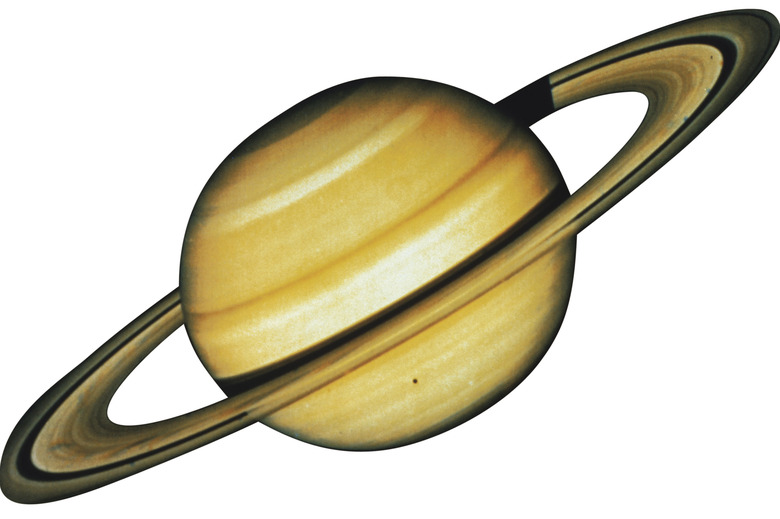What Is In The Middle Of Saturn?
The gas giant Saturn is the second largest planet in the solar system, but its distance from Earth has made it difficult to explore. Aside from a few flybys from probes in the 1970s and 1980s, the only thorough examination of the planet came when the Cassini-Huygens spacecraft reached Saturn in 2004. Despite the limited amount of information available about Saturn, scientists have theorized about what lies at the planet's core.
Planetary Formation
Planetary Formation
According to the current theory of planetary formation, the leftover material from the formation of a star spreads out into a disc, with denser materials remaining closer to the center of the cloud and lighter elements orbiting further away. When the heavier, rockier material begins to collide, it forms dense, rocky planets called terrestrial planets. Beyond this region, lighter, icy elements form gas giants, sometimes called Jovian planets. Analysis of Saturn suggests that its core may be partially rocky, unlike other gas giants that may have no solid core at all.
Atmospheric Conditions
Atmospheric Conditions
About 75 percent of Saturn is hydrogen, with the remaining 25 percent mostly consisting of helium. There are also trace substances present, such as water ice and methane. The planet's strong gravity keeps the atmosphere tightly layered, although on occasion powerful storms break through from below and provide glimpses into the planet's interior. Conditions beyond the atmosphere's outermost reaches, however, have so far been impossible to observe directly.
Saturn's Density
Saturn's Density
One factor that offers a clue to Saturn's interior makeup is its density. Astronomers can calculate the mass of a planet by observing its orbiting moons, using their trajectory to calculate the mass of the planet they orbit. Observations also provide the diameter of Saturn, allowing scientists to calculate its density. The density of Saturn is 0.687 grams per cubic centimeter, which is actually less dense than water. This low figure suggests that if there is a solid core inside the planet, it is a relatively small one.
The Core
The Core
The evidence about the makeup of Saturn suggests that its core consists largely of the same elements that make up its atmosphere, with hydrogen and helium turned into a semiliquid, semisolid mass by the heat and gravitational forces present at the planet's center. While there may be some rocky chunks leftover from the planet's initial formation, scientists believe the majority of the core is a syrupy mix of hydrogen and other nearly frozen gases, with very little solid material present. Until future missions delve deeper into the mystery of the gas giant, however, no one can tell for sure.
Cite This Article
MLA
Kazmeyer, Milton. "What Is In The Middle Of Saturn?" sciencing.com, https://www.sciencing.com/middle-saturn-42947/. 24 April 2017.
APA
Kazmeyer, Milton. (2017, April 24). What Is In The Middle Of Saturn?. sciencing.com. Retrieved from https://www.sciencing.com/middle-saturn-42947/
Chicago
Kazmeyer, Milton. What Is In The Middle Of Saturn? last modified March 24, 2022. https://www.sciencing.com/middle-saturn-42947/
